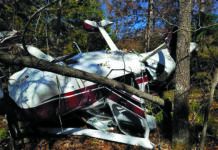Lycoming Crankshaft Suit
As I write this, were barely six weeks into the new year but already the first colossally bad development of 2005 has bubbled to the surface: The Interstate Southwest Ltd. lawsuit against Lycoming. In mid-February, Interstate won this suit and was awarded a staggering $96.1 million in damages.
In case youve deleted the details from your short-term memory, recall that Lycoming blamed Interstate for a bad batch of crankshaft forgings that resulted in a massive recall. The problem came to light in mid-2002, following a spate of engine failures caused by broken crankshafts. A joint Lycoming/FAA investigation blamed the problem on improper heating and forging by Interstate, Lycomings contractor for crankshaft blanks. To its credit, in support of affected owners, Lycoming spent at least $35 million straightening out the mess, although many owners were grounded for months.
Interstate, stung by what it claimed was harm to its reputation, went after Lycoming for damages in a Texas district court. Shortly thereafter, Lycoming countersued Interstate in a Pennsylvania court. Interstate lawyers convinced the jury that Lycomings directive to increase vanadium content in the forging metal to make machining easier and cheaper was the root cause of the failures, not faults in Interstates forging process. More troubling, Interstate proved to the jurys satisfaction that Lycomings crankshafts for high-output engines were and still are poorly designed and without any safety margins. Whether thats true or not will be the subject of continuing court and administrative squabbles which we will be following closely.
Not that this is in defense of Lycoming. The buck still stops with the engine maker who, we would certainly hope by now should know how to make a crankshaft correctly. But the profound losers are owners. Although suits of this sort have the sometimes salutary effect of unmasking grievous shortcomings companies would rather remain buried, there’s no free lunch. Owners pay the freight in higher insurance costs and diminished competition because companies are driven from the field in fear of ligitation. There’s real concern in the industry that Lycoming might not survive the latest developments. My guess is it will.
So, we have to ask what owners get out of this deal? Heres a refreshing idea: Spend a fraction of the money spent on protracted lawsuits and expensive defense and hire a few graduate engineers who can design a crankshaft that wont break. Broken crankshafts are bad enough but whats really broken is a system that depends on lawyers for quality control instead of engineers.
———-
Wanted: A Mini-PFD
If someone would just make a decent EHSI to replace aging and expensive-to-maintain mechanical modes, it would surely fly off the vendor shelves. Yet it hasnt worked out that way, as we report in this issue. The Sandel SN3308 is an excellent product with a respectable service history. Yet six years after its introduction, its out of production in what appears to us to be an unsustainable market. The Bendix/King KI825 is a competitive product, but with significant shortcomings that have made it a poor seller. Why? I think its because the perceived price-value relationship is out of whack. EHSIs are expensive to install and, in the end, they still arent solid-state systems, just solid-state displays. Yes, theyre better than iron HSIs, but not that much better.
Whats needed is a product thats between a toe-in-the-water electronic gyro and a full-up primary flight display of the sort few can afford as a retrofit, even if it was available. My idea is a combined AI/HSI driven by a stripped-down ADHRS; call it a mini-PFD. Brought in for, say, $30,000 installed, it could be a winner. Any takers?
-Paul Bertorelli




